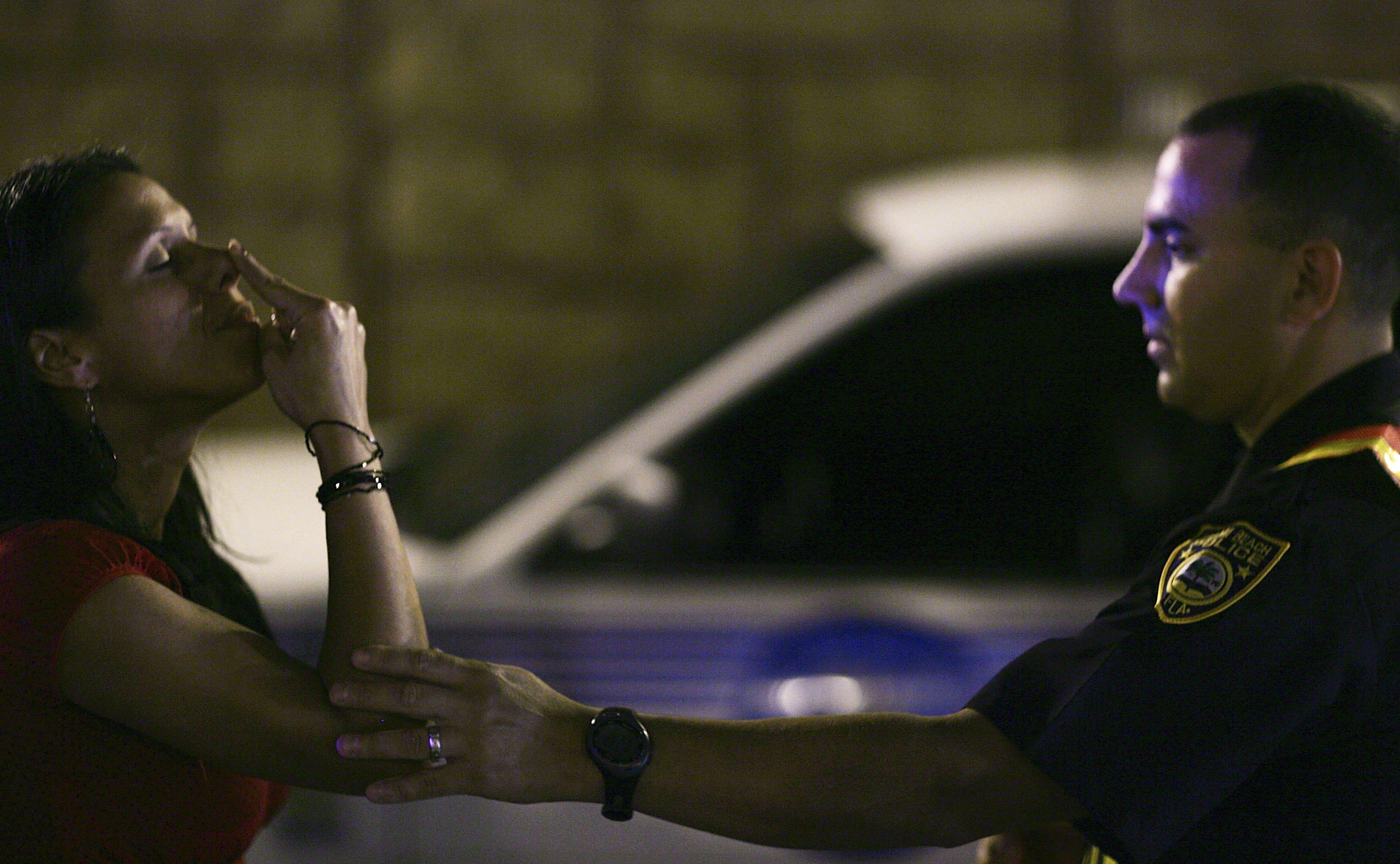The National Transportation Safety Board, a prominent but not necessarily powerful federal agency tasked with helping to keep American roads and skies safe, offered up nearly 20 recommendations today aimed at reducing drunken driving in the United States. The one that’s generating the lion’s share of the headlines (and opposition): A push to cut the current blood-alcohol-content level threshold nearly in half, from .08 to .05.
BAC varies by a number of factors, including everything from weight and gender to stomach contents. Roughly speaking, however, a 180-pound man could down four drinks in about 90 minutes and still legally get behind the wheel of a car under the current threshold adopted in all 50 states. If the limit were to drop to .05, then our hypothetical drinker would most likely have to cut himself off after the third drink, according to the New York Times’ math. (Obviously, things get even more fuzzy the longer a particular drinking session goes.)
Here’s the Washington Post with the safety board’s argument:
More than 100 countries have adopted the .05 alcohol content standard or lower, according to a report by the board’s staff. In Europe, the share of traffic deaths attributable to drunken driving was reduced by more than half within 10 years after the standard was dropped. …
New approaches are needed to combat drunken driving, which claims the lives of more than a third of the 30,000 people killed each year on U.S highways — a level of carnage that that has remained stubbornly consistent for the past decade and a half, the board said. “Our goal is to get to zero deaths because each alcohol-impaired death is preventable,” NTSB Chairman Deborah Hersman said. “Alcohol-impaired deaths are not accidents, they are crimes. They can and should be prevented. The tools exist. What is needed is the will.”
Unfortunately for the safety board, it looks like that aforementioned will is currently in short supply. The most vocal opposition is coming from the obvious places: trade groups with skin in the game. The managing director at the American Beverage Institute, for one, called the idea “ludicrous” and suggested it would “criminalize perfectly responsible behavior.” But the proposal also appears unlikely to receive a warm welcome in many states, some of which were slow to sign on to the current BAC limit and which are under no obligation to adopt—or even seriously consider—the NTSB’s recommendations. “It was very difficult to get .08 in most states so lowering it again won’t be popular,” Jonathan Adkins, an official with the Governors Highway Safety Association, told reporters. “The focus in the states is on high (blood alcohol content) offenders as well as repeat offenders. We expect industry will also be very vocal about keeping the limit at .08.”
In a sign of just how difficult it would be to round up support for a lower BAC threshold, Mothers Against Drunk Driving suggested this afternoon that, while they won’t fight the effort, they won’t fight for it either, instead focusing the group’s considerable resoucres on what it called “proven drunk driving countermeasures.” That’s obviously a rough blow for the federal safety advocates given the role MADD played in the last fight over BAC. If the moms don’t want to take up this fight, it’s hard to imagine who else could fill that gap.
The current level was adopted by all 50 states and D.C. only after President Bill Clinton signed a 2000 law that would have withheld highway construction cash from any state that didn’t agree to the stricter standard. If Washington decides it wants to again use the federal cash as leverage, it would likely get its way. But given the current state of play in the nation’s capital, that’s a long shot at best for the foreseeable future.
Several of the other suggestions offered by the board look to capitalize on technological advances to curb drinking and driving, including the wide-spread adoption of alcohol ignition interlock devices for those already convicted of getting behind the wheel after too many drinks, the wider use of so-called “sniffing flashlight” by officers to detect alcohol odors during traffic stops, and more research into cars that themselves can prevent someone who has been drinking from starting their car.
